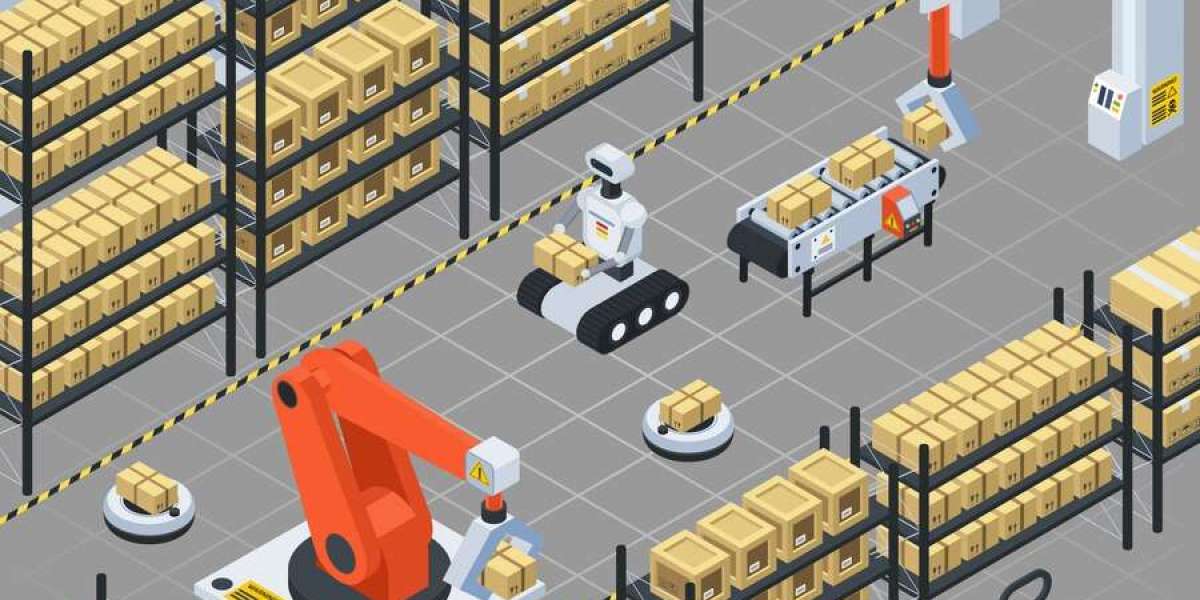The warehouse automation market is transforming supply chain operations by improving efficiency, reducing labor costs, and increasing speed and accuracy. Technologies such as robotics, artificial intelligence (AI), and Internet of Things (IoT)-enabled automation are becoming more prevalent in warehouse management. However, despite the clear benefits, several barriers are slowing down the widespread adoption of warehouse automation. High costs, workforce challenges, integration complexities, regulatory hurdles, and cybersecurity threats are major obstacles that businesses must overcome to successfully implement automation.
High Initial Investment Costs
One of the biggest barriers to warehouse automation adoption is the high cost of investment. Purchasing robotic systems, AI-driven warehouse management software, and automated storage and retrieval systems (ASRS) requires substantial financial resources. In addition to the cost of acquiring new technology, businesses must also account for installation, training, and maintenance expenses. Small and medium-sized enterprises (SMEs) often struggle to afford these investments, limiting their ability to compete with larger, more automated warehouses.
Workforce Resistance and Skill Gaps
The introduction of automation in warehouses often faces resistance from workers who fear job displacement. Many employees view automation as a threat to their employment, leading to reluctance in adopting new technologies. Additionally, the transition to automation requires specialized skills in robotics programming, AI operations, and system maintenance—skills that many warehouse workers currently lack. The shortage of trained professionals further complicates the adoption of automation, forcing businesses to invest in workforce training and reskilling programs.
Integration Challenges with Legacy Systems
Many warehouses still operate using outdated legacy systems that were not designed to support modern automation technologies. Integrating automated solutions with existing infrastructure can be complex, time-consuming, and expensive. Compatibility issues between different software platforms, data management systems, and robotic technologies create additional challenges. Businesses must either upgrade their entire system or develop customized integration solutions, both of which require significant investments.
Regulatory and Compliance Hurdles
Warehouse automation must comply with various government regulations and industry standards, which can slow down its implementation. Businesses need to ensure that automated systems meet labor laws, workplace safety regulations, and data privacy requirements. Compliance challenges vary across different regions, making it difficult for multinational companies to implement standardized automation solutions. Constantly evolving regulations require businesses to stay updated and make continuous adjustments to their automation strategies.
Supply Chain Disruptions and Component Shortages
The automation market depends on a steady supply of electronic components, sensors, and robotic parts. However, supply chain disruptions caused by geopolitical issues, trade restrictions, and material shortages can delay automation projects. The global semiconductor shortage, for instance, has significantly impacted the availability of essential components for warehouse automation. These disruptions can increase costs and extend implementation timelines, making it difficult for businesses to adopt automation at scale.
Cybersecurity Risks in Automated Warehousing
With the increasing use of IoT-enabled automation and cloud-based warehouse management systems, cybersecurity threats are becoming a major barrier. Automated warehouses are vulnerable to hacking, data breaches, and ransomware attacks that can disrupt operations and compromise sensitive information. Weak security measures can lead to operational downtime, financial losses, and reputational damage. Businesses must invest in strong cybersecurity protocols, including encryption, firewall protection, and regular system audits, to mitigate these risks.
Technological Limitations and Compatibility Issues
Despite advancements in automation, some warehouse environments are not yet fully compatible with automated systems. Warehouses handling fragile or perishable goods, irregularly shaped inventory, or operating in extreme environmental conditions face challenges in finding suitable automation solutions. Additionally, different automation vendors may use proprietary technologies that are not easily compatible with each other, leading to inefficiencies. Standardization of automation technologies can help address these challenges, but progress in this area has been slow.
Environmental and Sustainability Concerns
While automation improves efficiency, it also raises environmental concerns. Many automated warehouses consume large amounts of energy, increasing carbon footprints. The production and disposal of automation equipment contribute to electronic waste, raising sustainability concerns. Businesses looking to balance automation with environmental responsibility must invest in energy-efficient automation solutions, renewable energy sources, and sustainable warehouse designs. However, these eco-friendly initiatives often come with additional costs, slowing their adoption.
Strategies to Overcome Key Challenges
To overcome these barriers, businesses need to adopt strategic approaches that facilitate automation implementation. Flexible financing models, such as leasing instead of purchasing automation equipment, can reduce initial investment costs. Workforce upskilling programs and employee engagement initiatives can help address resistance to automation. Standardizing automation technologies and improving software interoperability can ease integration with legacy systems. Strengthening cybersecurity measures and ensuring compliance with evolving regulations will also help businesses mitigate risks and accelerate automation adoption.
Conclusion
The warehouse automation market has the potential to revolutionize supply chain management, but several barriers hinder its widespread adoption. High costs, workforce adaptation issues, integration complexities, regulatory constraints, and cybersecurity threats remain major challenges for businesses. However, companies that proactively address these barriers through strategic investments, employee training, and improved security measures will be better positioned for long-term success. As technology continues to evolve, businesses that navigate these barriers effectively will lead the future of warehouse automation.







